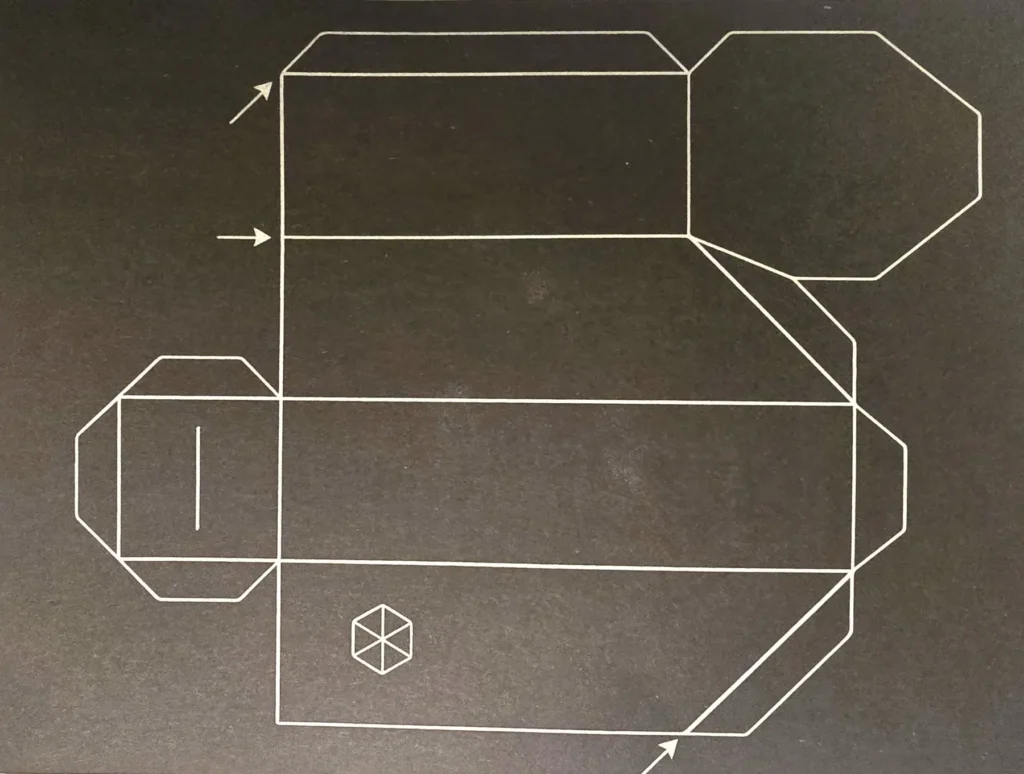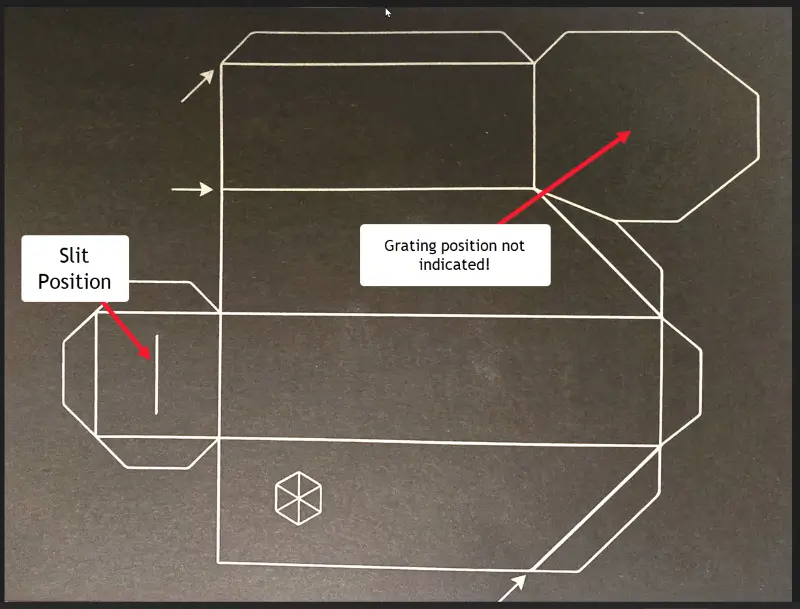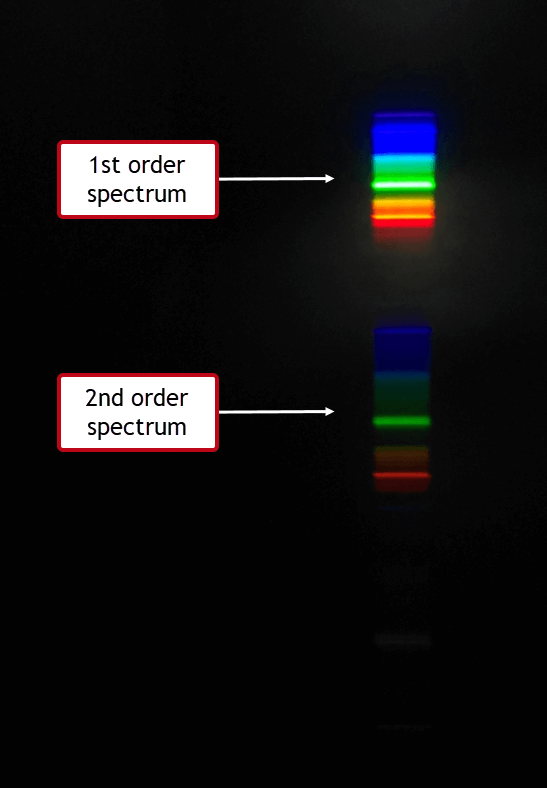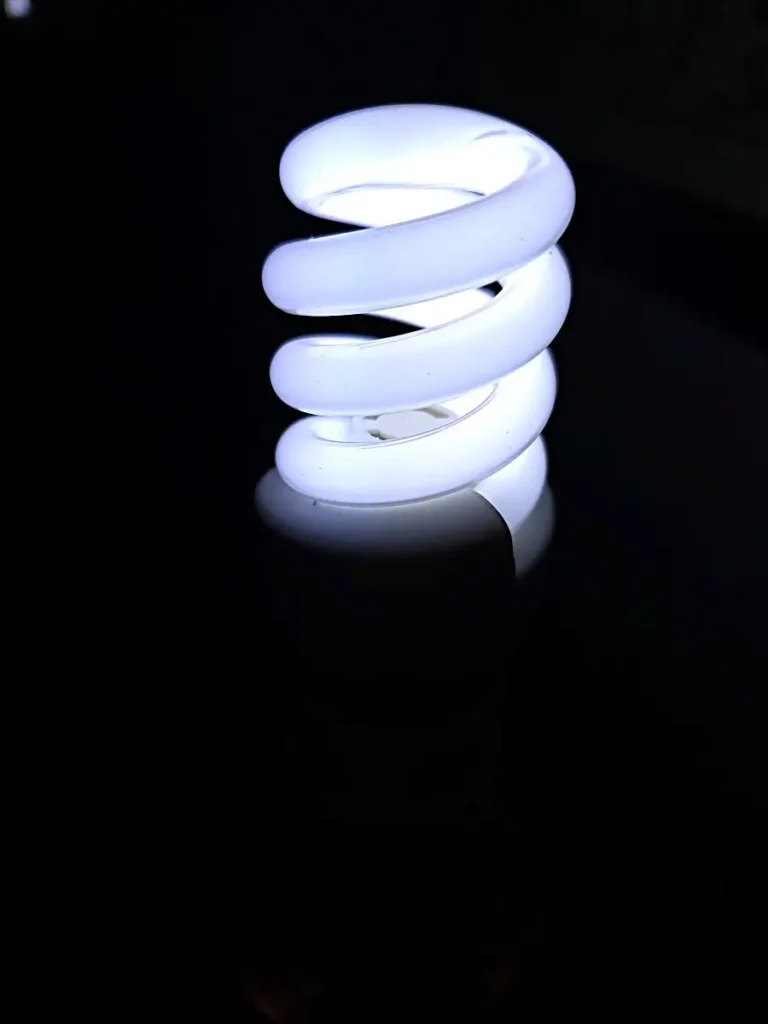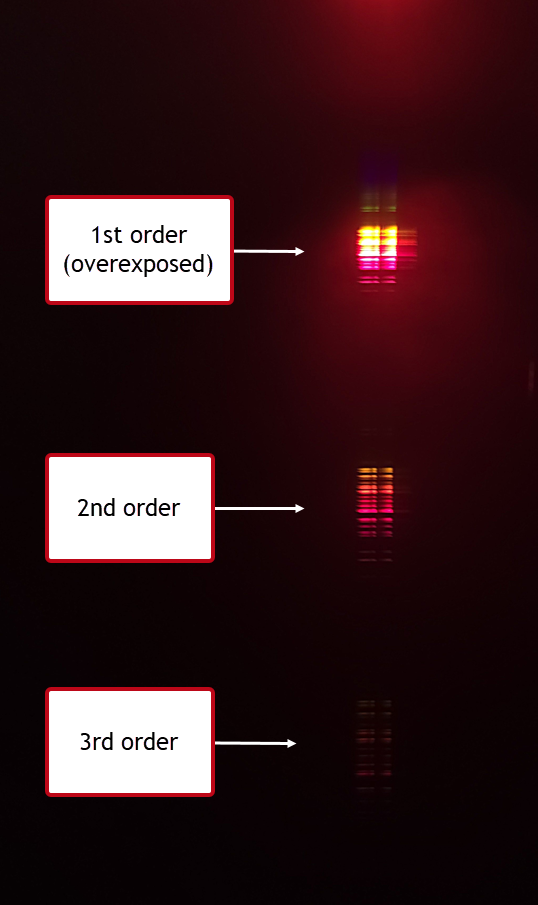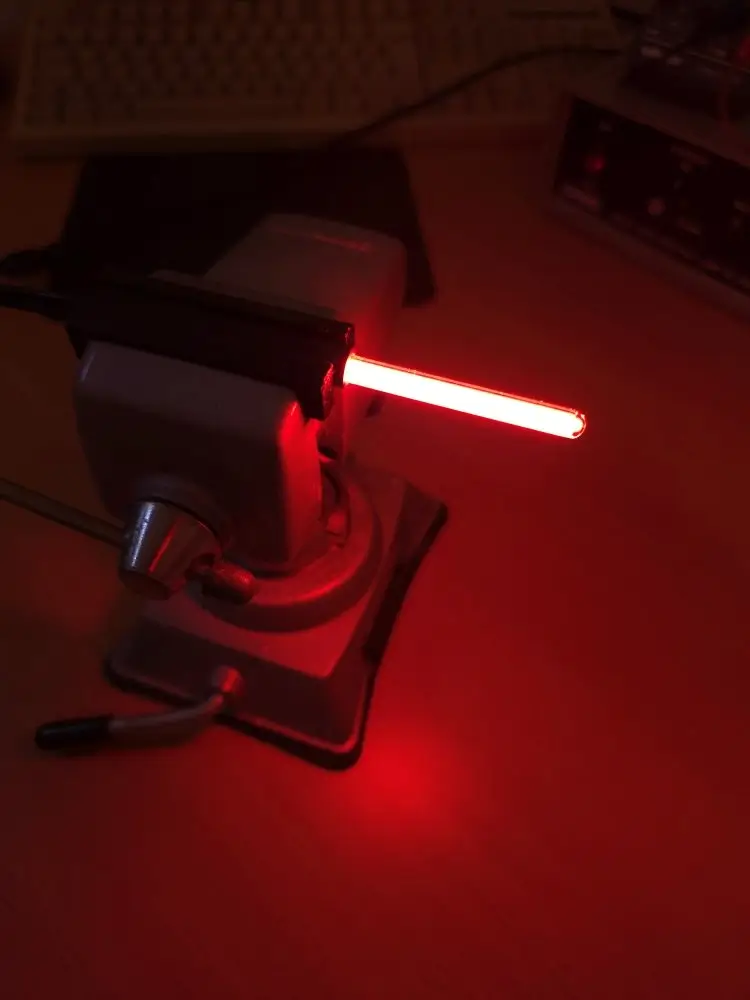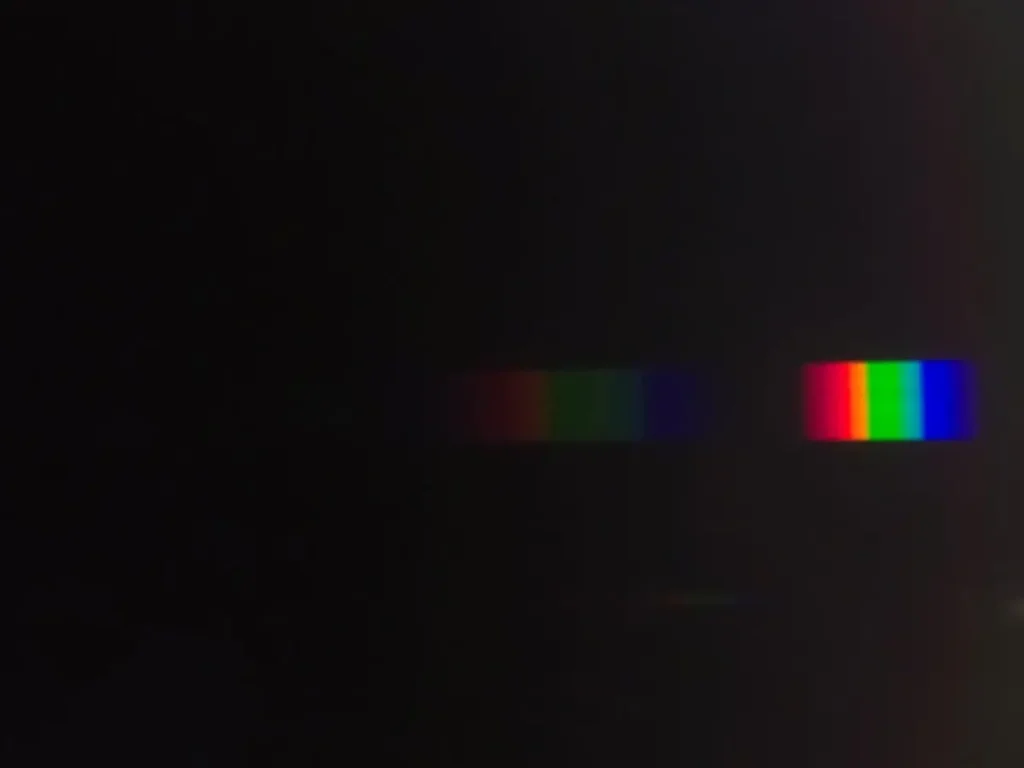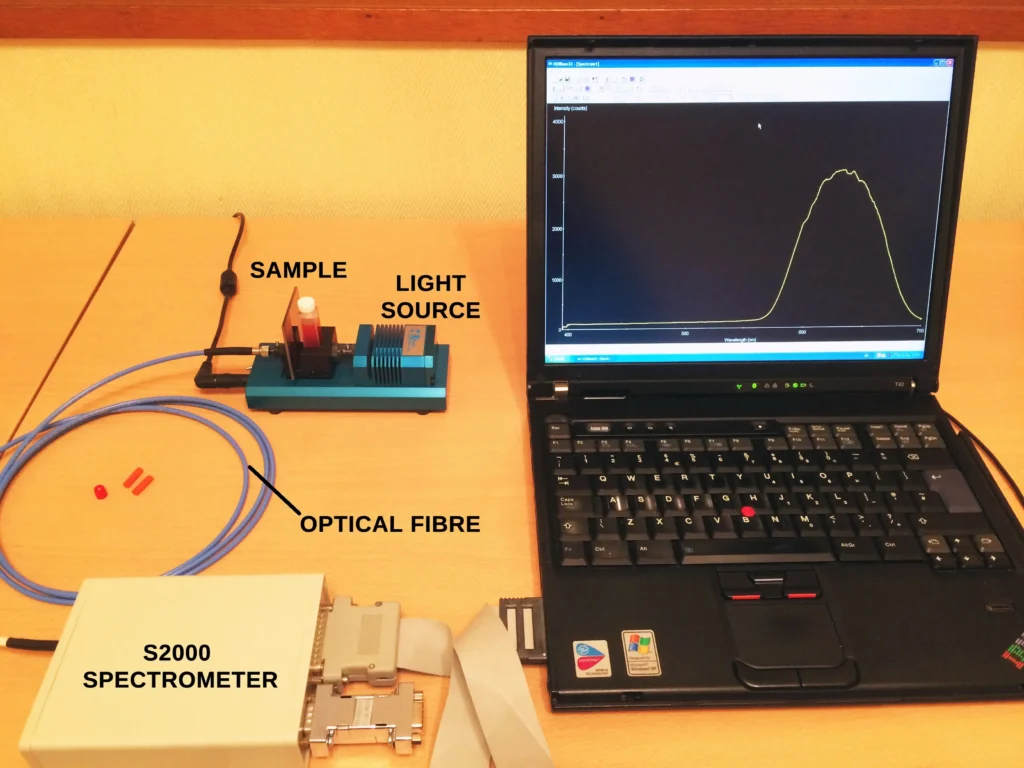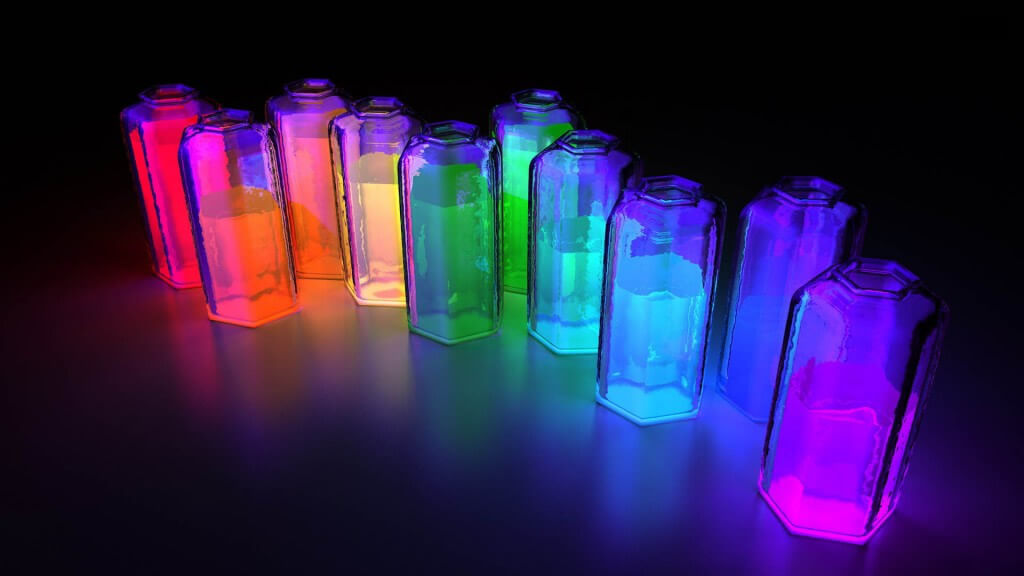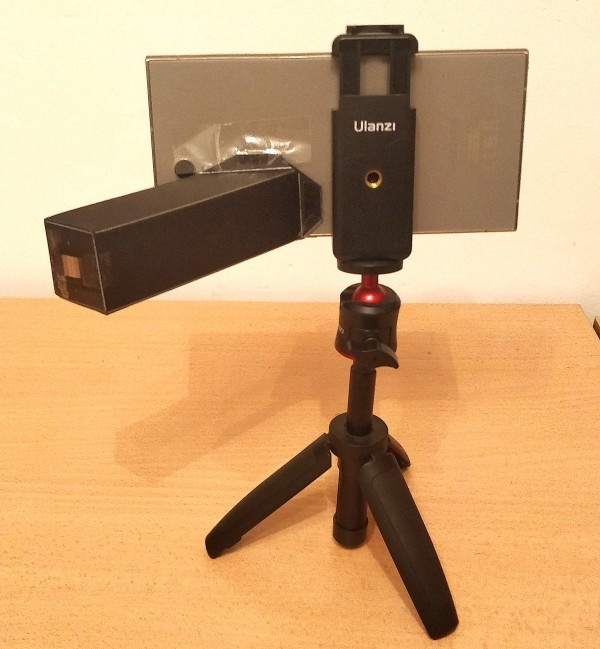
Introduction
Here’s an inexpensive way to use the camera sensor in your smartphone as a light detector for a spectroscope. With a sheet of folded card and a cheap diffraction grating and slit, you can create a simple but effective smartphone spectrometer!
In recent years several online sources for constructing a smartphone spectroscope have appeared. Some use paper versions, as explained below in this post, whilst others have used 3D printers to make more solid types. As an example, the 3D printing share site Thingiverse list several designs. There are even companies that sell spectrometers such as the GoSpectro, specifically designed with the smartphone in mind and built with higher quality components, but that cost several hundred dollars.
For this short post I will review the construction of a 20 dollar smartphone spectroscope available from Thunder Optics, a small company marketing optical and Raman spectrometers, UV and visible light sources and accessories, based in Montpellier, France.
Construction
For 20 dollars (or euros) plus shipping, you receive a sheet of thin black card with a white outline of the cuts and folds that you need to make in order to construct the body of the spectroscope. You also receive 2 gratings of 500 and 1000 lines per mm, and two thin metal slits of 100 and 200 microns.
The template for the spectroscope body is shown here:
The whole outer edge of the design is cut out, and folds are made as indicated by the arrows. The “door” to the spectroscope is where the grating has to be placed and is the octagonal shaped outline on the top right in the above image. Unfortunately the model I received did not have any white outline to indicate the exact position for where the grating should go.
Nevertheless, a square “window” must be accurately cut out of this side so that the grating is well aligned with the slit. In my case this had to be estimated. The body was cut and folded according to the simple instructions and maintained in place with PVA glue and tape. The position of the slit, which is well indicated in the instructions, and the grating (not so well indicated!) is shown here:
When you have completed it, this little spectroscope looks something like the following images, showing the slit end, the grating end, and the spectroscope attached to a smartphone.
Final Stages
Orienting the grating film correctly is important. The tiny lines (also called grooves) in the grating sheet are totally invisible to the naked eye; but they must be aligned parallel to the slit. In order to get the orientation right, with a pair of tweezers you can hold up the film to a white light source to check which way the film disperses a rainbow spectrum. If the slit is in a vertical direction, then the “rainbow” should be horizontal.
The spectroscope must then be carefully attached in position with tape, ensuring that it is located over the front camera lens of your phone. After some trial and error, the familiar rainbow colours of a spectrum can be seen when pointing the phone at, for example, an incandescent lamp or LED light bulb. This should confirm that the grating direction is correct.
Testing the Spectroscope - Some Spectra
Some examples of spectra that can be observed with this little gadget are shown below. They were obtained using the higher resolution 1000 line/mm grating and the 100 micron slit. For low-intensity light sources the wider 200 micron slit can be used to increase light through the spectroscope. Using the lower resolution (500 line/mm) second grating will also improve the intensity of a spectrum, but will be less detailed.
In order to achieve correct exposure and focus, it is recommended to change your phone camera’s settings manually, rather than using any auto function. Most modern smartphones have a “Pro” menu option to manually adjust focus, camera shutter speed, ISO and white balance (WB). The WB setting should not be changed, since this modifies the colour temperature and changes the relative intensities of any spectral lines whereas we want to see the raw spectrum.
Fluorescent Lamp
Here is the spectrum of a common fluorescent light bulb.
And here is the spectrum from a small neon lamp. The different spectra images correspond to different diffraction orders.
Solar Spectrum
Finally, if you point the phone at a bright blue sky, you obtain the spectrum of the Sun ith the following result…
The second order spectrum is just about faintly visible to the left of the “rainbow” on the right. Just distinguishable too some subtle grey vertical lines which are several of the Fraunhofer absorption lines in the spectrum of our local star.
Overall Impressions
A smartphone spectroscope represents an excellent way to introduce young students to the principles of diffraction and emission and absorption line spectra. This little gadget would form a useful part of any STEM curriculum for the appropriate age range in physics, chemistry and astronomy classes. Since the vast majority of young students own smartphones these days, having them construct their own spectroscopes and learning the basic principles of spectroscopy, together with how a spectroscope actually functions, is a big plus.
This particular model from Thunder Optics, whilst inexpensive, does come with a couple of negatives. The absence of where exactly to install the grating film has already been mentioned above, although this may well have only occurred with the model I personally received.
A choice of two gratings of different resolution is very nice and welcomed, however the size of the films is too small, in my opinion, at only 1 cm square. Since one of the gratings was not cut square, it is obvious that they have been hand cut from a much larger sheet of grating film (possibly from Edmund Optics who market exactly this type of holographic grating film on a roll). 2 cm square gratings would have been much more welcome and easier to handle and tape down into position during alignment.
On the plus side, the metal slits are of excellent quality, and appear to have been laser-cut from thin aluminium sheet. Similar designs online describing these “paper spectroscopes” haved used razor blades as the slit, with the obvious attendant risk of some cut student fingers in a classroom setting!
Overall, this little spectroscope works quite well when the very low cost is considered, and I was able to produce some well-defined spectra from suitable emission line sources as the above results demonstrate.
Recommended as an introduction to spectroscopy for younger minds.
Fom Steve’s Open Lab
